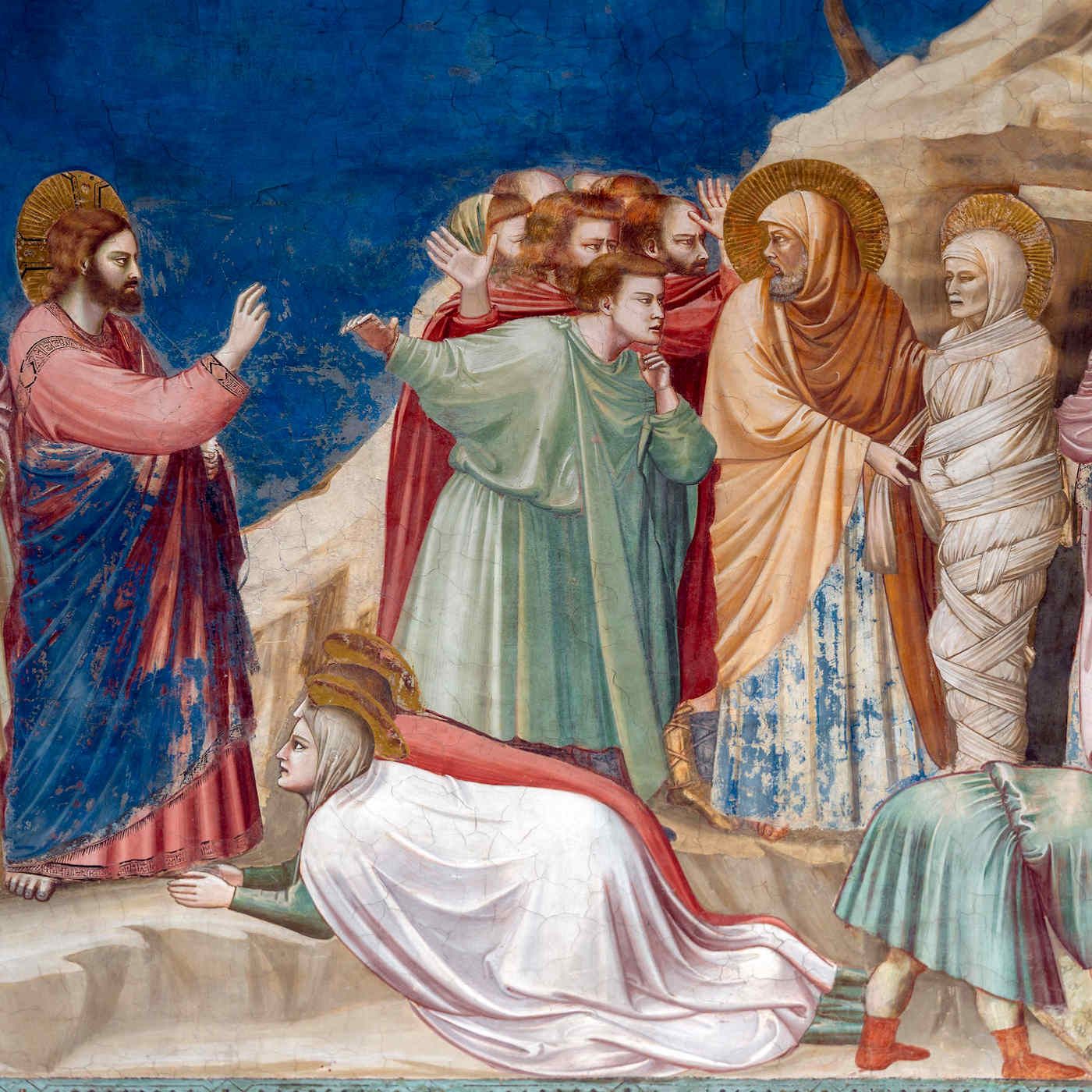“Lazarus, come out!” The dead man came out, tied hand and foot with burial bands, and his face was wrapped in a cloth. So Jesus said to them, “Untie him and let him go.” John 11:43–44
The death of Lazarus can be seen as a symbolic representation of the soul that has died from mortal sin. This is similar to the fact that leprosy, physical ailments and the like are also symbols of sin. For that reason, Jesus’ initial reactions reveal how we should respond to serious sin in our lives. When Jesus faced the death of Lazarus, “he became perturbed and deeply troubled,” “Jesus wept,” He became “perturbed again” and He “cried out in a loud voice.” Though Jesus was God, He freely chose to assume human nature and to experience human emotions and passions to teach us how we should react. In this case, He chose to become perturbed, deeply troubled, to weep and to cry out to show us how we should react to grave sin. Grave sin kills the spirit. As a result, we must be deeply affected if we commit or witness a grave sin.
One lesson we can take from this passage is that when you or a loved one falls into grave sin, it must not be ignored. Final impenitence is a sin by which a person fails to have appropriate remorse for sin and reacts to it in a dismissive and casual manner. This cannot be our reaction. Begin by considering the great value of taking sin seriously, reacting to it with passion and emotion, and crying out to God for forgiveness.
When Jesus cried out, commanding Lazarus to come out of the tomb, the details were added that Lazarus did come forth but was still bound “hand and foot with burial bands, and his face was wrapped in a cloth.” Saint Augustine teaches that, in part, this symbolizes the entire process of confession and the forgiveness of sins. First, no person is capable of confessing their sins by their own effort. It must be that they are moved by grace and the command of our Lord to come forth to show themselves in their bound state to God. Lazarus’ obedience to Jesus’ command symbolizes the Christian’s response to God when called to repentance. When our Lord says, “Untie him and let him go,” this symbolizes the unmerited effect of the Sacrament of Confession and the power it has to release a person not only from their sins but also from the ongoing effects of those sins.
Our Church teaches that sin has a double consequence. First, it keeps us from eternal salvation. This effect is remedied through Confession and forgiveness. However, there is a second effect called “temporal punishment” (see the
Catechism of the Catholic Church #1471–1473). This “punishment” is not from God, but from sin. It means that when we sin, even in a less serious way, we become attached to that sin and that the ongoing temptation to return to it is strengthened. Thus, ongoing conversion also means we hear our Lord say, “Untie him and let him go.” This is especially accomplished by ongoing conversion and growth in virtue.
Reflect, today, upon the rich symbolism found in the story of the raising of Lazarus from the dead. As you do, listen for the passionate voice of Jesus who calls to you, “Come out!” What sin is Jesus calling you to be free from? Identify that sin and repent of it with the same passion that our Lord exhibits. From there, consider any ongoing temptation you struggle with and any attachment you still have toward a particular sin. Jesus desires that you be completely unbound and set free. Be open to that grace and do all you can to accept it.
My merciful and passionate Lord, You command me, in love, to come forth from all sin. And when I respond, You command that the effects of my past sins be removed. Please free me, dear Lord, from all that binds me so that I will be set firmly on the glorious road of virtue that leads to eternal joy. Jesus, I trust in You.Source of content: catholic-daily-reflections.comCopyright © 2023 My Catholic Life! Inc. All rights reserved. Used with permission via RSS feed.


